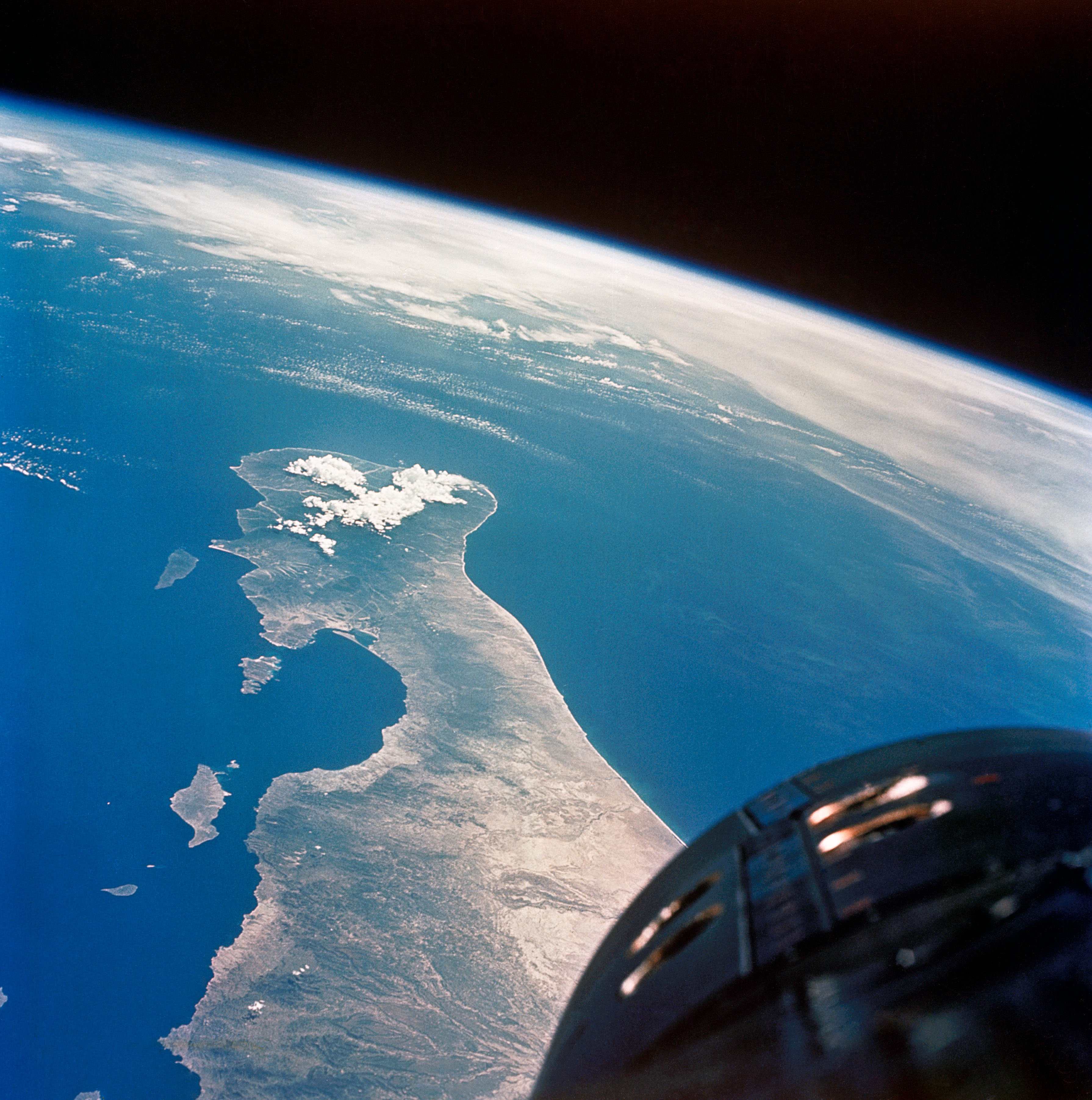
Five decades have now passed since a mission which Pete Conrad once described as “the longest thing I’ve ever had to do in my life.” Gemini V was the third manned flight of NASA’s two-man spacecraft, destined to clear many of the hurdles on the road to the first piloted lunar landing. Those hurdles included rendezvous, docking, spacewalking, a precision re-entry … and long durations of between eight and 14 days, the minimum and maximum anticipated lengths of a return trip to the Moon. On 21 August 1965, Conrad and his Gemini V command pilot, Gordon Cooper, blasted off on a mission which they had lightheartedly dubbed “Eight Days or Bust.” Privately, they would come to refer to it, somewhat disparagingly, as “Eight Days in a Garbage Can.”
By 23 August, two days into the flight, that garbage can was shaping up quite nicely. As described in yesterday’s AmericaSpace article, Gemini V ran into early difficulties which forced Cooper and Conrad to power down many of their systems, and the astronauts could complete only a handful of their scientific experiments. The result was that the men frequently had to endure long periods of drifting flight, with little to do. A dramatic reduction of available propellant made the last few days little more an endurance run. Flight Director Chris Kraft told the astronauts to limit their thruster usage as much as possible, and many of their remaining photographic targets, which required them to maneuver the spacecraft into optimum orientations, had to be curtailed.
Still, a range of high-quality imagery was acquired. These included panoramas of the southwestern United States, the Bahamas, southwestern Africa, Tibet, India, China, and Australia. Images of the Zagros Mountains revealed greater detail than was present in the official Geological Map of Iran. Cooper and Conrad also returned pictures of meteorological structures—including the eye of Hurricane Doreen, brewing to the east of Hawaii—together with atmospheric “airglow.” In addition, they took pictures of the Milky Way, the zodiacal light, and selected star fields. Other targets included two precisely timed Minuteman missile launches and infrared imagery of volcanoes, land masses, and rocket blasts.
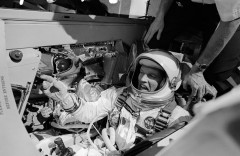
The scientific nature of many of these experiments did not detract—particularly in the eyes of the Soviet media—from the presence of a number of military-sponsored investigations. Cooper and Conrad’s flight path carried them over North Vietnam 16 times, as well as 40 times over China and 11 times over Cuba, prompting the Soviet Defence Ministry’s Red Star newspaper to claim that they were undertaking a reconnaissance mission. The situation was not helped by President Lyndon B. Johnson’s decision, whilst the crew was in orbit, to fund a major $1.5 billion U.S. Air Force space station, known as the Manned Orbiting Laboratory (MOL). Among the actual military experiments undertaken by Gemini V were observations of the Minuteman plume and irradiance studies of celestial and terrestrial backgrounds, together with tests of the astronauts’ visual acuity in space to follow up on reports that Cooper had made after his Faith 7 mission. Large rectangular gypsum marks had been laid in fields near Laredo, Texas, and Carnarvon, Australia, although weather conditions made only the U.S. site visible.
Cardiovascular experiments performed during the mission would reveal that both men lost more calcium than the Gemini IV crew, although principal investigator Pauline Beery Mack expressed reluctance to predict a trend, since “a form of physiological adaptation may occur in longer spaceflight.” Medically, lead physician Dr. Chuck Berry’s main concerns were fatigue and his advice was that they get as much sleep as possible. “I try to,” yawned Conrad at one stage, “but you guys keep giving us something to do!” All in all, they managed between five and seven hours’ sleep at a time and expressed little dissatisfaction with Gemini V’s on-board fare: bite-sized, freeze-dried chunks of spaghetti and meatballs, chicken sandwiches, and peanut cubes, rehydrated with a water pistol. An accident with a packet of shrimp, though, caused a minor problem when it filled the cabin with little pink blobs. Conrad even tried singing, out of key, to Capcom Jim McDivitt at one point.
Years later, Conrad would recall that the eight-day marathon was “the longest thing I ever had to do in my life.” He and Cooper had spent the better part of six months training together, so “didn’t have any new sea stories to swap with one another … there wasn’t a whole lot of conversation going on up there.” Nancy Conrad would recall her late husband describing how the confined cabin caused his knees to bother him—their sockets felt as if they had gone dry—and that he would have gone “bananas” if asked to stay aloft any longer. He found it hard to sleep, hard to get comfortable, and the failures meant he and Cooper spent long periods simply floating with nothing to do. After the flight, he told fellow astronaut Tom Stafford that he wished he had taken a book, and this gem of experience would be noted and taken by the crew assigned to fly the 14-day mission. Nancy Conrad described Cooper’s irritation at losing so much of his mission. He was far from thrilled that the two main tasks for Gemini V, rendezvous and long-duration flight, were becoming little more than “learning-curve opportunities” and suggested throwing an on-board telescope in the Cape Kennedy dumpster when it twice refused to work. Later, when the spacecraft was on minimum power and the astronauts were still expected to keep up with a full schedule, Cooper snapped, “You guys ought to take a second look at that!” As for physical activity, he grimaced that his only exercise was chewing gum and wiping his face with a cleansing towel.
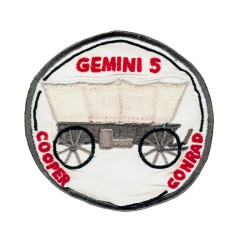
On the ground, Deke Slayton was concerned that such an attitude would not help the command pilot’s reputation with NASA top brass. Indeed, Gemini V would be Cooper’s final spaceflight and, although he would later complain bitterly about “losing” the chance to command an Apollo mission, some within the astronaut corps would feel that Cooper’s performance and strap-it-on-and-go outlook had harmed his career. Tom Stafford was one of them. “Gordo … had a fairly casual attitude towards training,” he wrote in his autobiography, We Have Capture, “operating on the assumption that he could show up, kick the tires and go, the way he did with aircraft and fast cars.”
To spice matters up still further, worries about the fuel cells continued to plague Gemini V’s final days. Their process of generating electricity by mixing hydrogen and oxygen was producing 20 percent too much water, Kraft told Conrad, and there were fears that the spacecraft was running out of storage space. This water excess might back up into the cells and knock them out entirely. In order to create as little additional water as possible, the astronauts powered down the capsule from 44 to just 15 amps, and on 26 August Kraft even considered bringing them home 24 hours early, on their 107th orbit. However, by the following day, the water problem abated, largely due to the crew drinking more than their usual quota, and a full-length mission seemed assured.
Eitherway, they had long since surpassed Bykovsky’s Vostok 5 record. In fact, by the time Cooper and Conrad splashed down, they would have exceeded the Soviets on several fronts: nine manned missions to the Reds’ eight, a total of 642 man-hours in space to their 507, and some 120 orbits on a single mission to their 81. At last, after eight years in the shadows—first Sputnik, then Gagarin, Tereshkova, Voskhod 1, and Leonov—the United States was pulling ahead into the fast lane of the space race. When it seemed that Gemini V might come home a day early and miss the scheduled Sunday 29 August return date, mission controllers in Houston even played the song “Never on Sunday,” together with some jazz.
The astronauts also had the opportunity on the last day of the mission to talk to an “aquanaut,” Aurora 7 veteran Scott Carpenter, who was on detached duty to the Navy. Carpenter, who had broken his arm in a motorcycle accident a year before and been medically grounded by NASA, was partway through a 45-day expedition in command of Sealab II, an underwater laboratory on the ocean floor, just off the coast of La Jolla, Calif. The Sealab effort, conceived jointly by the Navy and the University of California’s Scripps Institution of Oceanography, sought to discover the capacity of men to live and work effectively at depth.
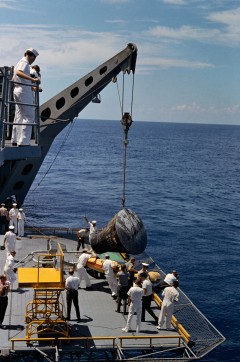
The music, the chat with Carpenter, and Conrad’s dubious singing did little to detract from the uncomfortable conditions aboard Gemini V. As they drifted, even with coolant pipes in their suits turned off, the two men grew cold and began shivering. Sleep was difficult. Chuck Berry had wired Conrad with a pneumatic belt around each thigh, which automatically inflated for two minutes of every six throughout the entire mission. The idea was that, by impeding blood flow, it forced the heart to pump harder and gain its much-needed exercise. Berry felt that if Conrad came through Gemini V in better physical shape than Cooper, who did not wear the belt, a solution may have been found for “orthostatic hypotension,” the feelings of lightheadedness and fainting felt by some astronauts after splashdown.
For the two astronauts, that splashdown could not come soon enough. By landing day, 29 August 1965, their capsule had become cluttered with rubbish, including a litter of freeze-dried shrimp, which had escaped earlier in the mission. The appearance of Hurricane Betsy over the prime recovery zone prompted the Weather Bureau to recommend bringing Gemini V down early, and Flight Director Gene Kranz agreed to direct the USS Lake Champlain to a new recovery spot. At 7:27:43 a.m. EDT, Cooper fired the first, second, third, then fourth retrorockets, then gazed out of his window. It felt, he said later, as if he and Conrad were sitting “in the middle of a fire.” Since it was orbital nighttime, they had no horizon and were entirely reliant upon the cabin instruments to control re-entry. In fact, Gemini V remained under instrument control until they passed into morning over Mississippi.
The parachute descent was smooth. No oscillations were evident and the 7:55:13 a.m. EDT splashdown was a gentle one. As would later be determined, the computer had been incorrect in indicating that they would overshoot. A missing decimal point in a piece of uplinked data had omitted to allow for Earth’s rotation in the time between retrofire and splashdown. Cooper’s efforts to correct the overshoot had progressively drawn them short of the recovery zone. “It’s only our second try at controlling re-entry,” admitted planning and analysis officer Howard Tindall. “We’ll prove yet that it can be done.”
Gemini V had lasted seven days, 22 hours, 55 minutes, and 14 seconds from its Pad 19 launch to hitting the waves of the western Atlantic, and the crew was safely aboard the Lake Champlain by 9:30 a.m. Despite the difficulties, most of Cooper and Conrad’s objectives had been successfully met. Yet more success came when Chuck Berry realized that, despite the days of inactivity with little exercise aboard the capsule, the astronauts were physiologically “back to normal” within days, clearing the way for Frank Borman and Jim Lovell to attempt a 14-day endurance run on Gemini VII. The missions that followed would snatch victory from the jaws of defeat and set aside another obstacle on the path to the Moon.
This is part of a series of history articles, which will appear each weekend, barring any major news stories. Next week’s article will focus on the 30th anniversary of Mission 51I, a daring space shuttle flight in August 1985 to retrieve, repair, and re-launch a crippled satellite.
Want to keep up-to-date with all things space? Be sure to “Like” AmericaSpace on Facebook and follow us on Twitter: @AmericaSpace




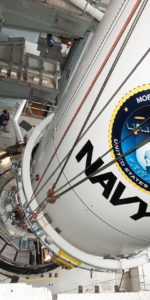
As he usually does, Ben has written an interesting and informative posting on Gemini 5. I was old enough to appreciate the flight as it happened and the details contained in the articles add to the story of Gemini 5. Thanks, Ben!